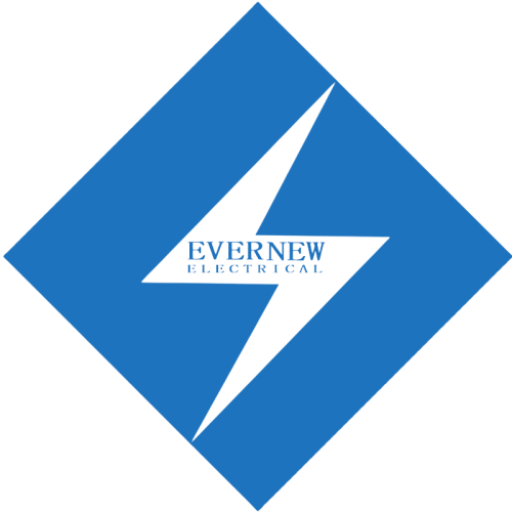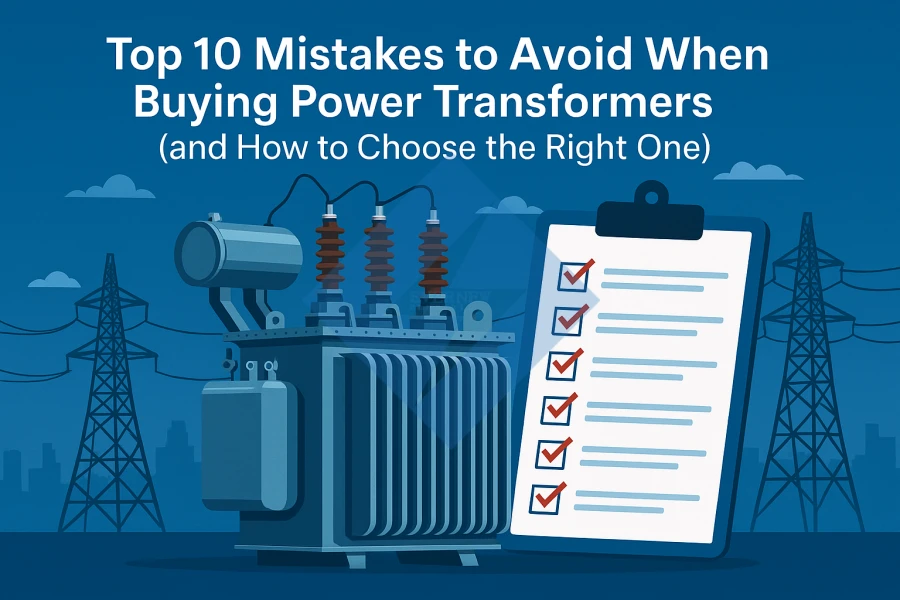Úvod: Proč se často nedaří pořídit výkonový transformátor?
Výkonové transformátory jsou důležitými součástmi každého elektrického systému. Jejich výběr a pořízení významně ovlivňují bezpečnost, účinnost a celkové náklady projektu. Vzhledem k jejich technické složitosti, vysoké hodnotě a regionálně odlišným normativním požadavkům však všude v procesu nákupu číhají potenciální "pasti". Pro inženýry, manažery nákupu a projektové manažery v Severní Americe a Evropě může jakékoliv nedopatření vést ke zpoždění projektu, dodatečným nákladům, nebo dokonce k ohrožení bezpečnosti.
Tento článek se zabývá deseti nejčastějšími chybami při nákupu výkonových transformátorů a nabízí praktické strategie, které vám pomohou vyhnout se těmto nástrahám a zajistit výběr správného transformátoru pro vaše konkrétní potřeby.
1. Ignorování místních norem a předpisů: Základem je dodržování předpisů
IEC vs. ANSI vs. IEEE: pochopení rozdílů v normách
Globální normy pro konstrukci a výrobu transformátorů se dělí především na dva hlavní systémy:
IEC (Mezinárodní elektrotechnická komise): Široce se používá v Evropě, Asii a ve většině částí světa.
ANSI (Americký národní normalizační institut) / IEEE (Institut elektrotechnických a elektronických inženýrů): Používá se především v Severní Americe (Spojené státy a Kanada).
Zmatení nebo zanedbání těchto norem může vést k tomu, že zařízení neprojde místními přejímacími testy, což může vést k nákladným úpravám nebo výměně.
Evropa vs. Severní Amerika: Specifické regulační požadavky
Evropa (směrnice EU o ekodesignu): ukládá přísné požadavky na energetickou účinnost transformátorů úrovně 1 a 2 s cílem snížit energetické ztráty.
Severní Amerika (DoE - Department of Energy, CSA - Canadian Standards Association): Rovněž platí přísné předpisy týkající se energetické účinnosti, bezpečnosti a použití materiálů.
Případová studie: Evropská společnost si pro svůj severoamerický projekt pořídila sérii transformátorů vyhovujících normě IEC. V důsledku toho transformátory během instalace a uvádění do provozu nesplňovaly místní normy energetické účinnosti DoE a bezpečnostní certifikace CSA, což vedlo k vážným zpožděním projektu a značným nákladům na přepracování a výměnu.
2. Volba nesprávného typu transformátoru: Vhodný pro vaši aplikaci
Trh nabízí širokou škálu výkonových transformátorů, z nichž každý má specifické výhody a omezení pro různé aplikace.
Porovnání hlavních typů:
Olejové transformátory: Nabízejí vynikající odvod tepla, jsou vhodné pro velké kapacity, venkovní použití nebo rozsáhlé průmyslové objekty, ale vyžadují protipožární opatření.
Suché transformátory: Včetně typů s otevřenou ventilací a typů z lité pryskyřice poskytují vynikající požární bezpečnost a jsou ideální pro vnitřní instalace, hustě obydlené oblasti, výškové budovy nebo místa s přísnými požadavky na požární bezpečnost. Jejich odvod tepla je však relativně méně účinný.
Suché transformátory z lité pryskyřice: Jsou známé svou vynikající izolací, bezúdržbovostí, odolností proti požáru a výbuchu a nízkou hlučností a jsou běžnou formou suchých transformátorů.
Výběr specializovaných aplikací:
Montáž na podložku/Kompaktní Transformátory rozvodny: Vysoce integrované a prostorově úsporné, často používané v městských obytných oblastech nebo malých průmyslových zónách.
Transformátory montované na stožáry: Běžně se vyskytují ve venkovských nebo příměstských distribučních sítích.
Mobilní transformátory: Slouží k nouzovému záložnímu nebo dočasnému napájení.
Výběr scénáře aplikace: Průmyslová výroba, obnovitelná energie (solární/větrná), datová centra, železniční doprava, komerční budovy - každému scénáři by měl odpovídat nejvhodnější typ transformátoru.
Více informací:Co je transformátor namontovaný na pólu
3. Podcenění požadavků na zatížení a kapacitu: Plánování budoucího růstu
Dimenzování kapacity: Nebezpečí příliš malé nebo příliš velké kapacity
Poddimenzovaná kapacita: Vede k tomu, že transformátor pracuje pod trvalým přetížením, což zkracuje jeho životnost, zvyšuje ztráty a může způsobit poruchy.
Nadměrná kapacita: vede ke zbytečnému plýtvání počátečními investicemi a zároveň k neefektivnímu provozu při nízkém zatížení, což vede k dalším ztrátám.
Budoucí potřeby rozšíření: Zohlednění růstu na 10-20 let
Při výpočtu kapacity je zásadní vzít v úvahu nejen aktuální zatížení, ale také předpokládaný růst podniku za 10-20 let nebo potřeby rozšíření zařízení. Je vhodné zahrnout dostatečnou rezervu, abyste se vyhnuli pozdější nákladné modernizaci z důvodu nedostatečné kapacity.
Výpočet zatížení: Vědecké posouzení
Přesný výpočet zatížení je zásadní a vyžaduje zohlednění jmenovitého výkonu zařízení, faktoru diverzity, špičkového zatížení, harmonických účinků a dalších faktorů. V tomto procesu může pomoci použití specializovaného softwaru nebo konzultace se zkušenými inženýry.
4. Přehlížení energetické účinnosti: Klíč k nákladům životního cyklu
Normy účinnosti: Přísné požadavky v Evropě a Severní Americe
Evropský EcoDesign Tier 2: stanoví přísná omezení pro ztráty bez zatížení a ztráty při zatížení pro transformátory s cílem podpořit úsporu energie a snížení emisí.
Severoamerické normy účinnosti DoE: Rovněž stanovte zvláštní požadavky na účinnost transformátorů a pravidelně je aktualizujte.
Dopad ztrát na náklady životního cyklu
Počáteční náklady na pořízení transformátoru jsou jen špičkou ledovce. Jeho energetické ztráty (ztráty naprázdno a ztráty při zatížení) během provozu neustále přinášejí náklady na elektřinu.
Dlouhodobá návratnost investic do vysoce účinných transformátorů: Přestože počáteční cena vysoce účinných transformátorů může být o něco vyšší, úspory elektrické energie po celou dobu jejich životnosti tuto cenu značně převýší, což vede k významné návratnosti investic (ROI). Při rozhodování o nákupu musí být hlavním faktorem hodnocení celkové náklady na vlastnictví (TCO).
Více informací:Co je transformátor rozvodny
5. Ignorování podmínek chlazení a instalace: Zajištění optimálního provozu
Odvádění tepla z transformátoru má přímý vliv na jeho životnost a provozní spolehlivost.
Analýza metody chlazení:
ONAN (Oil Natural Air Natural): Olej přirozeně cirkuluje, vzduch se přirozeně ochlazuje.
ONAF (Oil Natural Air Forced): Olej cirkuluje přirozeně, vzduch je chlazen nuceně (ventilátory).
OFAF (olejové nucené větrání): Olej je nuceně cirkulován, vzduch je nuceně chlazen.
OFWF (olejové zařízení s nuceným oběhem vody): Olej je nuceně cirkulovaný, voda je nuceně chlazená.
Různé metody chlazení jsou vhodné pro různé výkony a požadavky na prostředí.
Úvahy o podmínkách instalace:
Vnitřní/venkovní instalace: Vyžaduje různé požadavky na stupeň ochrany a odolnost proti korozi.
Omezení hluku: Projekty v městských nebo obytných oblastech musí brát v úvahu hladinu hluku z transformátorů a mohou vyžadovat dodatečná opatření ke snížení hluku.
Podmínky větrání: Zajistěte dostatečné větrání pro odvod tepla vznikajícího při provozu transformátoru a zabraňte tak lokálnímu přehřátí.
Případová studie: V projektu datového centra nebyl při nákupu transformátorů dostatečně zohledněn odvod tepla ze serverovny a prostorová omezení. To vedlo k tomu, že transformátory pracovaly při příliš vysokých teplotách, což ovlivnilo stabilní provoz zařízení datového centra a nakonec si vyžádalo nákladnou generální opravu chladicího systému.
6. Zanedbání bezpečnostních a ochranných prvků: Být proaktivní
U elektrických zařízení je prvořadým hlediskem bezpečnost.
Klíčové bezpečnostní prvky:
Třída izolace: Určuje maximální teplotu, kterou transformátor vydrží.
Ochrana proti přetížení: Zabraňuje poškození transformátoru v důsledku nadměrného zatížení.
Ochrana proti zkratu: Rychle odpojí napájení při zkratu, čímž chrání zařízení a bezpečnost personálu.
BIL (základní úroveň izolace): Odráží schopnost transformátoru odolávat bleskovým impulsům a spínacím přepětím.
Zvláštní požadavky na životní prostředí:
Ochrana proti požáru a výbuchu: Zejména u olejových transformátorů zvažte použití ohnivzdorného oleje nebo instalaci protipožárních stěn.
Ochrana proti vodě (stupeň krytí IP): Vhodnou úroveň ochrany zvolte podle vlhkosti a prašnosti prostředí instalace.
7. Nezohlednění údržby a provozuschopnosti: Dlouhodobé provozní náklady
Transformátor je dlouhodobá investice a jeho údržba a provozuschopnost významně ovlivňují náklady na jeho životní cyklus.
Snadno se design udržuje?
Snadnost kontroly: Je snadné provádět běžné kontroly a výkonnostní testy?
Přístup k údržbě: Je k dispozici dostatečný prostor pro výměnu a opravy součástí?
Dostupnost náhradních dílů: Jsou důležité náhradní díly snadno dostupné?
Podpora dodavatele:
Technická podpora: Může dodavatel poskytnout včasné a účinné technické konzultace a diagnostiku závad?
Poprodejní servis: Existuje komplexní systém poprodejního servisu, včetně servisu a oprav na místě?
Dlouhodobé ztráty z prostojů v důsledku nevhodné údržby: Jakékoli prostoje způsobené problémy s údržbou mohou mít za následek značné ekonomické ztráty. Výběr výrobku, který se snadno udržuje a má silnou podporu dodavatele, je zásadní.
Získat více:Kolik stojí transformátor pro napájecí pól
8. Ignorování dodacích lhůt a spolehlivosti dodavatelů: Zajištění harmonogramu projektu
Výrobní cyklus velkých transformátorů:
Návrh, výroba a testování velkých výkonové transformátory obvykle trvá 3 až 12 měsíců nebo i déle. Při plánování projektu je třeba s tímto faktorem počítat.
Jak si vybrat dodavatele s rychlým dodáním?
Výrobní kapacita: Pochopení rozsahu výrobní linky dodavatele, automatizace zařízení a systému řízení výroby.
Strategie inventarizace: Někteří dodavatelé mohou mít skladem běžné modely, aby zkrátili dodací lhůty.
Řízení dodavatelského řetězce: Účinné řízení dodavatelského řetězce zajišťuje včasné dodávky surovin a komponentů.
Případová studie Evernew Transformer: Jako výrobce s globální výrobou a zkušenostmi s dodavatelským řetězcem se společnost Evernew Transformer snaží minimalizovat dodací lhůty a zároveň zajistit kvalitu, splnit naléhavé požadavky projektů prostřednictvím optimalizovaných výrobních procesů a inteligentního plánování.
9. Výběr pouze na základě ceny: Náklady životního cyklu a past nízké ceny
Past nízké ceny: Kompromisy v oblasti kvality, životnosti a účinnosti
Nejlevnější transformátor často znamená kompromisy v materiálech, řemeslném zpracování, designu nebo účinnosti. To může vést k:
Kratší životnost: Vyžaduje dřívější výměnu, což zvyšuje dlouhodobé náklady.
Vyšší míra selhání: Časté odstávky a opravy, které mají dopad na výrobu a dodávky energie.
Špatná energetická účinnost: Významné dlouhodobé provozní ztráty, zvyšující se provozní náklady.
Jak vyhodnotit celkové náklady na vlastnictví transformátoru (TCO)?
TCO = počáteční pořizovací náklady + náklady na dopravu a instalaci + provozní náklady na energii (účty za elektřinu) + náklady na údržbu a opravy + náklady na prostoje + náklady na likvidaci po skončení životnosti.
Volba hodnoty před nejnižší cenou: Rozhodnutí o nákupu by měla být založena na TCO, nikoli pouze na počáteční ceně. Transformátor s mírně vyšší počáteční cenou, ale vyšší účinností, delší životností a nižšími náklady na údržbu se z dlouhodobého hlediska ukáže jako hospodárnější.
10. Nespolupracujete se zkušeným výrobcem: Profesionální přístup je zárukou úspěchu
Význam mezinárodních certifikací:
Certifikace ISO (např. ISO 9001): Označuje, že výrobce má spolehlivý systém řízení kvality.
Certifikace CE (Evropa): Výrobek splňuje požadavky EU na bezpečnost, ochranu zdraví a ochranu životního prostředí.
Certifikace UL / CSA (Severní Amerika): Výrobek splňuje bezpečnostní normy severoamerického trhu.
Spolupráce s výrobci, kteří jsou držiteli těchto mezinárodních certifikací, zajišťuje kvalitu a shodu výrobků.
Zkušenosti dodavatele s mezinárodními projekty:
Zásadní je výběr dodavatele se zkušenostmi s evropskými/severoamerickými projekty. Ti lépe rozumí místním předpisům, kulturním nuancím a potřebám zákazníků, což jim umožňuje poskytovat profesionálnější řešení.
Případové studie společnosti Evernew Transformer pro globální trh: Společnost Evernew Transformer má za sebou řadu úspěšných projektů v různých zemích světa, včetně Spojených států, Kanady a Německa. Její výrobky přísně dodržují mezinárodní a místní normy a nabízejí služby a technickou podporu na míru pro severoamerický a evropský trh, čímž zajišťují hladkou realizaci projektu.
Závěr: Vyvarujte se chyb, rozhodujte se chytře
Pořízení výkonových transformátorů je složitý úkol, ale pokud se vyvarujete výše uvedených deseti běžných chyb, můžete výrazně snížit rizika projektu a optimalizovat návratnost investice.
Klíčové poznatky:
Dodržování předpisů: Přísně dodržujte místní normy a předpisy.
Vhodnost: Zvolte správný typ a kapacitu transformátoru pro vaši aplikaci.
Účinnost: Stanovte priority energetické účinnosti a vypočítejte celkové náklady životního cyklu.
Bezpečnost: Zdůrazněte bezpečnostní a ochranné prvky transformátoru.
Provozuschopnost: Zvažte snadnou údržbu a podporu dodavatele.
Spolehlivost: Vyberte si zkušeného a spolehlivého výrobce se silnými dodacími schopnostmi.
Výzva k akci: Spolupracujte s profesionálním výrobcem
Abyste měli jistotu, že vaše rozhodnutí o nákupu jsou správná, doporučujeme spolupracovat s profesionálním výrobcem, jako je například Evernew Transformer, který má rozsáhlé zkušenosti a mezinárodní certifikáty v oblasti výkonových transformátorů. Může poskytnout nejen vysoce kvalitní a vyhovující výrobky, ale také odborné technické konzultace a podporu v průběhu celého procesu nákupu a provozu.
Další obsah
Často kladené otázky (FAQ)
Otázka: Jak si mám vybrat mezi suchými a olejovými transformátory?
A: Suché transformátory jsou díky své nehořlavé izolaci, nenáročné údržbě a šetrnosti k životnímu prostředí ideální pro vnitřní, požárně citlivé nebo obydlené prostory. Olejové transformátory jsou obecně účinnější pro větší výkony a venkovní aplikace a nabízejí lepší odvod tepla, ale vyžadují požární bezpečnost. Konkrétní aplikace, bezpečnostní předpisy a faktory prostředí určí nejlepší volbu.
Otázka: Jaký význam má pro výkonový transformátor hodnota BIL?
A: BIL (základní úroveň izolace) je měřítkem schopnosti transformátoru odolávat přechodným přepětím, jako jsou přepětí způsobená úderem blesku nebo spínacími rázy. Vyšší hodnota BIL znamená větší pevnost izolace a odolnost proti těmto elektrickým namáháním, což je zásadní pro zajištění dlouhodobé spolehlivosti a prevenci katastrofických poruch.
CTA: Kontaktujte nás
Kontaktujte společnost Evernew Transformer's získejte ještě dnes nabídku na míru a technickou podporu pro svůj severoamerický nebo evropský projekt, která vám zajistí bezproblémový nákup napájecího transformátoru!

